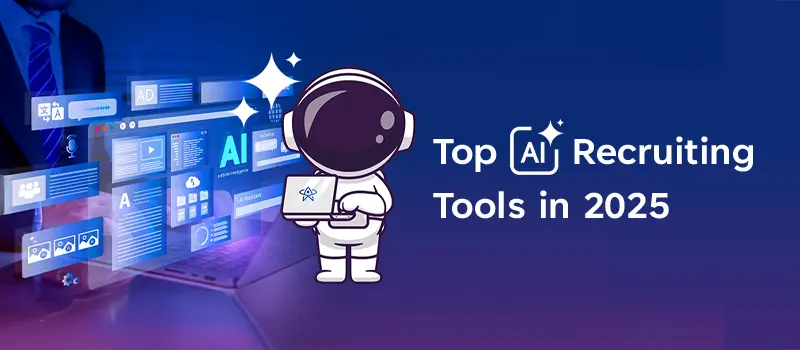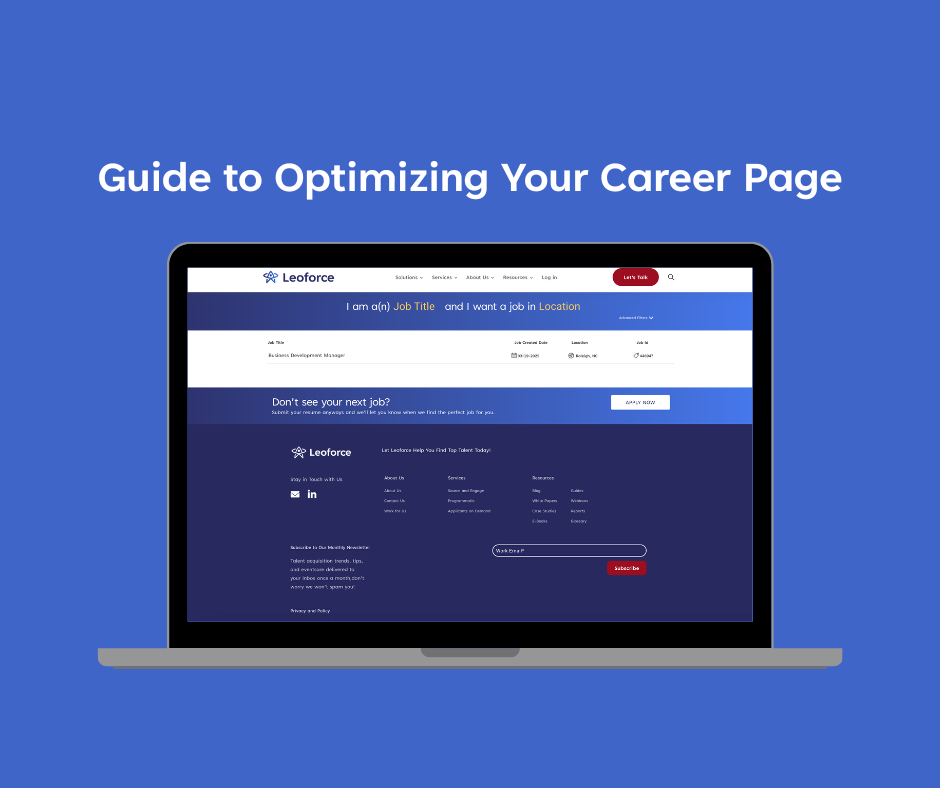What candidates want in work culture

The pandemic is shaping American culture and restructuring where we work, the tools we use, who we work with, and the work environment. Often an intangible quality, work culture is crucial to any employee experience.
When applying for jobs, people look for an atmosphere that aligns with their personal goals and values. Workplace culture is formed by:
- Policies
- Organizational structure
- Management
- Leadership
- Day-to-day practices and operations
A candidate’s first impression and experience of your corporate culture is the time spent speaking to you and the recruiting team. So, this first touchpoint is essential for delivering a great first impression. A recruiting tool like Leoforce makes this easy.
Work culture is defined by the beliefs, behaviors, and attitudes that make up the workplace itself. Different types of people may find themselves fitting in or feeling left out at various work settings. Culture is often associated with other physical attributes of the office, including break rooms and amenities.
Read on to learn what candidates truly want from their workplace culture, how culture has changed since the pandemic, and how you can fill the needs of both employees and the organization.
What is the work culture for remote workers?
Workplace culture has traditionally been defined by a company’s shared practices, norms, and attitudes. Before the pandemic, just 6% of employees worked primarily from home, and 75% had never worked from home at all.
In 2019, the average one-way commute in the United States hit an all-time high of 27.6 minutes. Doing away with commutes has the potential to save the average worker nearly an hour per day round trip. At that time with workplaces based in office settings, company culture was often defined by:
- Work-life balance
- Hours spent in the office
- Separation of senior and junior employees
- Dress code
- Hang-out areas
- In-office gyms
- Snacks
- And more
By May 2020, more than 33% of the U.S. workforce was working remotely. Working from home has brought flexibility, control over our own schedules, and autonomy over work. The change has also eliminated commutes.
On the other hand, culture can take on the atmosphere of one’s own home for those working remotely. Boundaries between work and life disappeared as people began working more than ever, at all hours of the day, and with no structured schedule.
The social component of interacting with colleagues and conversations by the water cooler has been transformed into virtual meetings. While face-to-face time is important, these sessions don’t exactly provide opportunities to develop close friendships or fulfilling connections.
What candidates really want from company culture
With over 55% of employees identifying that they would prefer to be remote at least three days a week, the autonomy and flexibility offered by remote work could be the wave of the future.
Aspects of work that matter most to employees include:
Work-life balance
Whether working remotely or in person, boundaries on the workday, email, and tasks are necessary. Employees don’t want to feel like they’re on the clock 24/7 or expected to be on-call at a moment’s notice. A 2021 LinkedIn survey found that work-life balance was the number one priority for job candidates.
Flexibility
Flexible work arrangements were the fastest-growing priority of candidates since COVID, with a 12% boost from pre-pandemic levels. With over half of the respondents stating they’d like a work-from-home arrangement, the option for flexible work is an essential benefit in today’s job market.
People want to work for leaders who listen to employee concerns and feedback. They also want a team of coworkers who share their values, as well as a supportive atmosphere that provides fun and inclusivity. It matters that leadership upholds company values and creates a positive work atmosphere for everyone to thrive.
Opportunities
Job seekers often look for positions where they’ll be able to benefit from what’s beyond the job description. This could be any of the following:
- Professional development
- Advanced learning
- Affordable healthcare
- Ample vacation time
- Opportunities to climb the corporate ladder
- Mutual respect
How can you meet the needs of both workers and the company?
It’s fair to assume that many companies believe an entirely remote workforce would dissolve company culture. Here’s how to strike a balance.
Establish a clear purpose for on-site and remote work
To meet the needs of job candidates while maintaining the heart of your company’s values and atmosphere, leadership should set explicit purposes for office space and reassess how and where work is done.
Reimagine ways to use the office, redesign the space to support organizational values, and reconstruct tools and processes so work can be done in person or remotely without diluting quality. Be clear why people would need to come into the office, which tasks must be done on-site, and the purpose of the physical space.
Offer better benefits, even if it means getting creative
With so many people looking to improve their relationship with work, you need to offer benefits that are truly worthwhile. Beyond the traditional offerings of healthcare and vacation time, you may have to get creative when thinking of ways to provide benefits to remote workers beyond the conventional snacks and break rooms.
Some options include:
- Hosting off-site events
- Distributing massage vouchers
- Starting a book-sharing program
- Instituting half days or days that end early (like summer Fridays)
- After-hours experiences
- Meetups to have meetings on a walk
- Sabbatical time off to pursue professional development or other interests
Want to expand your search for job candidates?
As the pandemic has changed the landscape in how many industries operate, this has also trickled down to what employees and job seekers want.
The transition from an employer to a candidate-driven market demands that you adapt to new methods of recruiting. With the help of better hiring methods and new recruiting tools like the Leoforce recruiting platform, you’ll be able to seamlessly improve the candidate experience.





